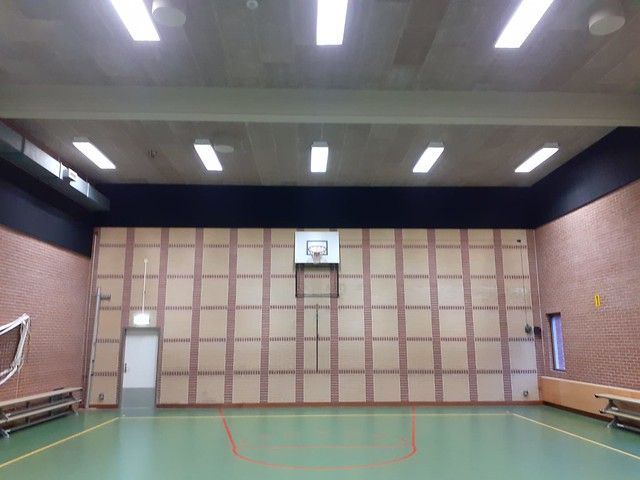Energy Efficient Dehumidifiers
A dehumidifier helps you achieve a comfortable indoor environment that’s free from fungus, mildew and mould. It can also reduce the allergens that favour moist environments, such as dust mites and irritants that trigger asthma.
To assess how well a dehumidifier will perform, look for its energy factor (EF) value. This indicates how much water it can remove per kilowatt-hour of electricity it uses.
Energy efficiency
The use of energy-efficient dehumidifiers is a great way to control humidity while also saving money and contributing to reducing global energy consumption. However, navigating the subject can be complicated by a variety of technical terms and acronyms, such as EER (Energy Efficiency Ratio), BTU (British Thermal Unit) and kWh (kilowatt hours).
In general, dehumidifiers require a certain amount of electrical power to function, but the energy used can vary between models. The ENERGY STAR label provides a clear guide to selecting appliances with energy-saving potential, while DOE regulations and standards also set minimum efficiency levels.
A dehumidifier extracts moisture from the air by using a fan to draw in warm, moist air, which is then sent through refrigerated coils that condense the water. The dry, dehumidified air is then released back into the room. This prevents the growth of mildew, bacteria and mold, while also improving indoor air quality.
Excess humidity can have a number of negative effects on the home, including peeling wallpaper and damp patches on walls, as well as damage to wooden furniture. By controlling this, an energy-efficient dehumidifier helps to protect the home and save on repair costs.
Investing in an energy-efficient dehumidifier may seem like a small step, but the impact can be significant. The reduced demand on power stations reduces greenhouse gas emissions and contributes to combating climate change.
Noise
Most dehumidifiers generate a fair amount of noise, mostly due to their compressors. The compressors are responsible for absorbing moisture and pumping it out of the dehumidifier, much like an air conditioner. dehumidifier This creates a lot of vibration and noise, especially if the compressor isn’t functioning properly.
Another source of noise is the fan. The fan generates a fairly pleasant sounding wind noise, but it can be quite loud. Depending on the model you choose, some models will have more of this wind noise than others. Also, if the dehumidifier isn’t placed in an appropriate location, it can cause the noise to be amplified.
Loose screws and other components may generate buzzing or rattling sounds. This is especially common with older models and dehumidifiers that have been used for a long time. Take a quick inspection of the unit and fix any loose parts that might be causing these sounds.
An uneven floor surface can amplify dehumidifier dehumidifier wholesale vibrations and noise. Placing a carpet, rug or mat underneath the dehumidifier can help reduce the noise generated by the vibrating compressor and fan. For the best results, place a rubber isolation pad or specialized anti-vibration pads.
Water collection
The amount of water a dehumidifier collects depends on its size and where you place it in your home. If you live in a humid region, you will need a large capacity model to absorb enough moisture from the air to make a difference.
A smaller device will collect less water than a larger one because it has to work harder to absorb the same amount of moisture. It is important to clean your collection tank regularly to avoid mold, which can be a health risk. A good rule of thumb is to drain your tank after every use and empty it completely before using it again. You should also mix in an antibacterial cleaner when draining the tank to kill any germs that may have formed inside.
To reduce energy consumption, choose a model with a high Energy Factor (EF). This number indicates how much water a machine can remove for each kWh of electricity it consumes. The higher the EF, the more efficient the dehumidifier is.
If you’re looking for ways to save on electricity and water costs, there are many things you can do. For example, you can install ceiling fans and exhaust fans in your kitchen, basement, attic, and bathrooms to improve ventilation and circulation. You can also reduce the amount of hot showers you take to cut down on steam that fuels humidity.
Maintenance
Dehumidifiers are generally very low maintenance devices, but there are a few things that you should do on an occasional basis. Most important is to clean the water tank periodically to prevent mildew and mold build-up. You should also check the air filter on a regular basis and replace it as needed. If your dehumidifier has coils, inspect them regularly to make sure they are free of frost or ice. It is also a good idea to apply oil to the motor occasionally.
You should also keep the outer plastic shell of the dehumidifier clean, as it can easily collect dust and dirt over time. You should also inspect the intake and exhaust grilles on a regular basis to ensure they are not blocked by dust particles. Finally, you should consider obtaining a hygrometer to monitor the relative humidity levels in your home, and if necessary take steps to correct the problem.
A dehumidifier is an excellent device for controlling moisture in the home, and it can help prevent many costly problems such as rusting metals, wood warping, and mold growth. However, even the best dehumidifier can begin to underperform if it is not maintained properly. If you are having trouble with your dehumidifier, it is a good idea to contact a local basement and foundation repair professional for advice.



